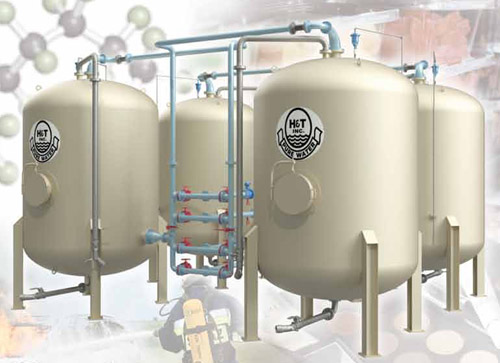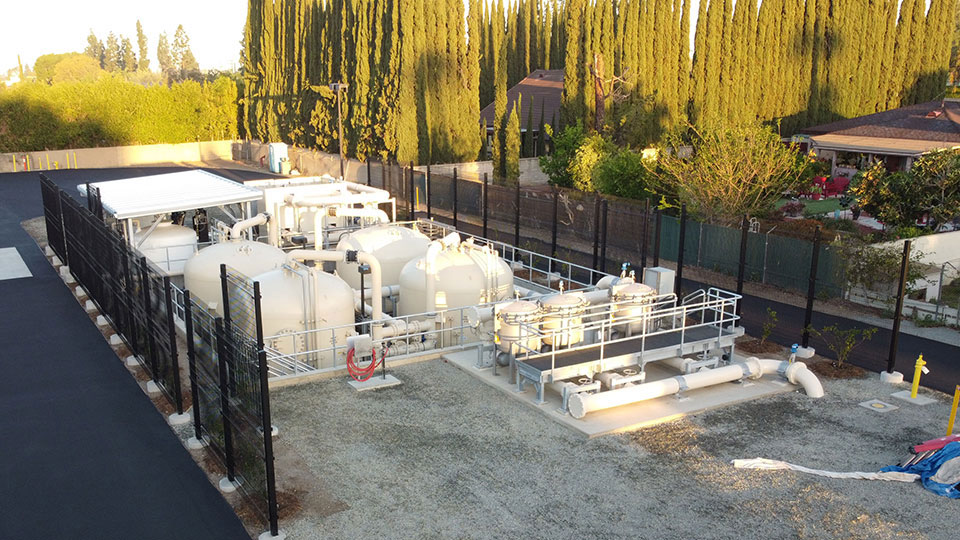Guidelines for PFAS Waste Management at Treatment Facilities
Guidelines for PFAS Waste Management at Treatment Facilities
Blog Article
Advanced Methods for Efficient PFAS Contamination Elimination
The persistent difficulty of PFAS contamination demands the exploration of sophisticated elimination methods that can properly address these dangerous materials. Innovative innovations, such as sophisticated oxidation procedures and various adsorption methods, have actually emerged as promising options in mitigating PFAS from influenced settings. Furthermore, the function of regulative structures in forming these technologies can not be ignored, as they determine the rate and instructions of removal initiatives. As we examine these sophisticated techniques, it comes to be crucial to evaluate their useful applications and the broader ramifications for environmental health and policy.
Comprehending PFAS Features
Although per- and polyfluoroalkyl materials (PFAS) have been widely utilized in numerous industrial and consumer items because of their special properties, their perseverance in the atmosphere positions substantial difficulties to public health and wellness and safety. PFAS are a group of artificial chemicals defined by a carbon-fluorine bond, one of the toughest chemical bonds understood, which contributes to their remarkable security and resistance to degradation. This security enables PFAS to accumulate in the atmosphere and living organisms, bring about prospective damaging health and wellness results.
These very same homes add to their environmental determination, as PFAS do not conveniently break down through natural processes. Understanding the chemical buildings of PFAS is important for creating effective methods to handle and minimize their ecological influence.
Cutting-edge Removal Technologies
The determination of PFAS in the atmosphere has spurred the growth of ingenious removal innovations targeted at properly removing these contaminants from influenced ecological communities. Among the most encouraging methods are advanced oxidation procedures (AOPs), which use powerful oxidants to damage down PFAS substances into less dangerous compounds. AOPs can be tailored to target details PFAS frameworks, enhancing their efficiency.
An additional emerging technology is making use of adsorption media, such as turned on carbon and ion exchange resins, which can selectively record PFAS from infected water. These products have revealed substantial removal effectiveness, although regular substitute and regeneration are needed to preserve performance.
Membrane layer purification strategies, consisting of reverse osmosis and nanofiltration, are additionally acquiring traction in PFAS remediation. These methods can properly separate PFAS from water, giving a practical solution for dealing with contaminated resources. Additionally, thermal therapy methods, such as incineration, can disintegrate PFAS right into non-toxic results, though they require mindful management to manage exhausts.
Collectively, these cutting-edge remediation innovations stand for considerable improvements in the continuous battle against PFAS contamination, offering numerous methods to restore damaged environments and secure public wellness.

Bioremediation Techniques
Bioremediation methods offer an appealing approach to resolving PFAS contamination by taking advantage of the natural capacities of bacteria to degrade these consistent compounds (m270 waste management). This technique involves using bacteria, fungis, and other microorganisms that can metabolize or transform PFAS materials into much less dangerous by-products
Current improvements in molecular biology and environmental microbiology have actually enhanced our understanding of microbial areas and their prospective roles in PFAS destruction. Researchers are actively discovering details pressures of microorganisms, such as Pseudomonas and Bacillus, which have shown the capability to damage down specific PFAS compounds.
In situ bioremediation methods, where microorganisms are stimulated straight in contaminated environments, can be specifically efficient. This technique typically involves the application of nutrients or electron contributors to advertise microbial development and activity. In addition, ex situ methods, such as bioreactors, permit for regulated problems that can optimize deterioration prices.
Despite the pledge of bioremediation, challenges stay, including the complicated nature of PFAS compounds and the requirement for comprehensive area testing - m270 waste management. Proceeded research and growth will be critical to refine these methods and examine their performance in diverse environmental contexts
Adsorption and Filtering Techniques
Addressing PFAS contamination typically involves utilizing adsorption and filtering approaches, which are designed to remove these consistent chemicals from water and dirt. Amongst the various methods, turned on carbon adsorption is widely used as a result of its high area and porosity, making it possible for reliable capturing of PFAS particles. Granular triggered carbon (GAC) systems are especially favored for treating large quantities of infected water, while powdered triggered carbon (SPECIAL-INTEREST GROUP) can be made use of for smaller-scale applications.
Ion exchange materials likewise show guarantee in PFAS removal, operating by trading PFAS ions with less dangerous ions in the water. This technique has demonstrated effectiveness in focusing PFAS browse around this site compounds, facilitating their succeeding elimination. In addition, membrane layer filtering strategies, such as reverse osmosis and nanofiltration, operate by making use of semi-permeable membrane layers to separate PFAS from water, effectively lowering their focus.
While these methods work, they need to be thoroughly selected based upon the particular PFAS substances present and the ecological context. Constant improvements in materials scientific research and engineering are causing the advancement of novel adsorbents and purification systems that enhance elimination efficiencies and lower functional prices, consequently improving total removal efforts.
Regulatory and Plan Factors To Consider
How can effective regulatory frameworks enhance the monitoring why not check here of PFAS contamination? Thorough plans are vital to make sure a coordinated and durable reaction to the challenges posed by per- and polyfluoroalkyl materials (PFAS) Regulations can develop clear guidelines for surveillance, reporting, and remediating PFAS-contaminated websites, promoting accountability among industries and public entities. (m270 waste management)

In enhancement, financial rewards and grants can be integrated right into plans to urge the fostering of sophisticated removal innovations. Policymakers must likewise focus on r & d, making certain that arising approaches for PFAS elimination are validated and applied effectively.
In addition, public understanding and interaction are vital parts of any type of regulative approach, empowering neighborhoods to promote for their health and wellness. Eventually, a well-structured governing environment will not only improve the monitoring of PFAS contamination but additionally advertise sustainable methods that shield future generations.
Conclusion
In summary, the complexity of PFAS contamination requires the fostering of innovative remediation techniques. Innovative modern technologies such as innovative oxidation processes, adsorption techniques, and membrane layer filtration have demonstrated substantial efficacy in eliminating these relentless substances from polluted water sources. Additionally, governing structures need to develop to support the execution of these technologies, guaranteeing risk-free and effective administration of PFAS pollutants. Get More Info Continued study and development in this area stay vital to dealing with the challenges postured by PFAS contamination.
Report this page